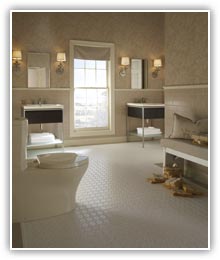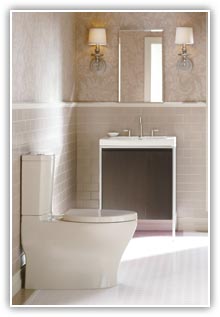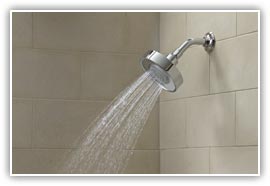By Matthew Marin, Article & Photos Provided by Kohler Co.
It is believed that water covers about 70 percent of the earth and is vital to the survival of every living organism on the planet. While the earth might seem like it has an abundance of water, less than one percent is available for human use. The rest is either salt water, fresh water frozen in the polar ice caps, or just inaccessible. As the earth’s population continues to grow and the demand for freshwater resources increases, the supply is becoming limited.

In the United States, conserving water is becoming a growing concern. Americans use water everyday for drinking, cleaning, and other sanitary purposes in the home. The average family uses over 300 to 400 gallons of water per day. Communities across the nation are facing challenges regarding its water supply, prompting some states such as California and Arizona, to restrict outdoor water usage and initiate public outreach campaigns, as a result of droughts.
But more can be done to reduce water usage, especially in the home. The bathroom accounts for most of the average American homeowner’s water consumption. Toilets, showerheads, and faucets use more potable water than is actually needed. According to the United States Environmental Protection Agency (EPA), toilets account for nearly thirty percent of an average home’s indoor water consumption, showers account for nearly 17 percent, and faucets account for more than 15 percent. If all inefficient toilets in U.S. homes were converted to WaterSense labeled models, more than 640 billion gallons of water per year could be saved – the equivalent of 15 days of flow over Niagara Falls, also according to the EPA.
Manufacturers of bathroom plumbing fixtures realize the gravity of the situation and are designing expanded lines of water-conserving products in an attempt to save one of earth’s most precious resources. Appealing to environmentally-conscious designers and consumers, these manufacturers are making water-saving technologies and designs – across all product categories and price points – as mainstays in their lines.
Manufacturers are also cognizant that while developing plumbing products that save water is essential, these products must also maintain elements of good design to attract customers to even consider them. That means incorporating materials, finishes and styles that captivate the most discerning designer, from those who prefer sleek modernism to those who desire traditional detail.

Many of these low-consumption products can be ideal alternatives for retrofit or new installation and meet the specifications of the EPA’s WaterSense label – a volunteer product labeling program that promotes the encouragement of water efficiency in several plumbing products.
By designing an entire bathroom with WaterSense-labeled plumbing products, the average household could save more than 2,300 gallons per year. One simple way for designers to encourage their clients to be more economical and eco-friendly is to replace older, inefficient toilets found in more than half the homes in the U.S. There are millions of toilets in use that flush 3.5 gallons or more per flush. This is considered to be the main source of wasted water in the entire home. WaterSense-labeled, high-efficiency toilets (HETs), on the other hand, could save nearly 2 billion gallons per day across the country—that equals nearly 11 gallons per toilet in the average home every day.
Limiting water use does not mean limited choices. Today, there are the hundreds of styles available today include 1- and 2-piece, single- and dual-flush, and standard and comfort height toilets.
“This past year, Kohler converted half of its 1.6 gallons-per-flush, high-performance gravity toilets to flush a mere 1.28 gpf. The gravity technology employed in these toilets ensures a consistent performance while saving about 20 percent of water per flush. The goal is to convert 100 percent of our toilets to 1.28 gpf by 2014,” said Robert Zimmerman, water conservation and sustainability manager for Kohler.

In addition to toilets, waterless urinals, typically used for commercial applications, are also finding their way into homes. These urinals can save 40,000 gallons of water per fixture annually and are becoming more commonplace in some residences, especially in the basement. “It’s wonderful, especially if you have a lot of males in the home,” said Nicole Facciuto, LEED AP, eco-friendly designer of HGTV’s Red Hot and Green.
Showering is second to toilets regarding water usage in the home, accounting for about 30 gallons per household on a daily basis. That’s nearly 1.2 trillion gallons of water used in the U.S. annually. Attempting to conserve water but also contributing to the overall showering experience, manufacturers have reinvented some of their most popular shower spray designs into a collection of water-efficient showerheads.
Not only saving water, but also satisfying expectations from an aesthetic and experiential standpoint, there are many 1.75-gallon-per-minute (gpm) shower sprays that offer significant water savings without sacrificing the feel of luxurious water coverage provided by these stylish oversized showerheads. “You can conserve water but still create a great shower experience,” said Lynn Schrage, channel manager for the Kohler Stores. For example: an average family of four taking approximately seven-minute showers, 1.75 gpm showerheads equal a 35 percent water savings over typical 2.75 gpm showerheads.
Bathroom faucets account for more than 1 trillion gallons of water across the U.S. each year. WaterSense-labeled, bathroom-sink faucets can reduce a sink’s water flow by 30 percent or more without sacrificing performance. Faucets with 1.5 gpm water-saving aerators offer a 45 percent water savings over inefficient 2.75 gpm faucets. For the average household, this can equal over 14,700 of gallons of water saved annually.

As with toilets and showerheads, many companies are converting their lavatory faucets to more water-efficient versions by featuring water-saving aerators, which increase the oxygen saturation of the water. The converted faucet models flow at 1.5 gpm, 30 percent less than the federal mandate of 2.2 gpm. These faucets not only save water but also come in multiple finishes; single, center set, wall-mount or widespread configurations, as well as modern and traditional styles to complement any bathroom to satisfy the varying tastes of consumers.
Making the switch to water-saving products, however, remains a hurdle for many homeowners. One of their biggest misconceptions is that water conservation means sacrificing form and function in favor of efficiency. But today’s high efficiency showerheads, faucets and toilets not only save water but also meet or exceed performance criteria compared to other products on the market. “Style, aesthetics and the experience of the product are as essential as the water that you’re saving,” said Diana Schrage, senior interior designer at the Kohler Design Center. “Our products are beautiful, highly functional and responsible to the environment in terms of saving water.”
The average consumer may not even be aware that the latest water-saving products exist. The current demand for water-saving fixtures is being driven by green designers, architects and builders, but mainstream America has not quite caught on just yet.
Some manufacturers are conducting outreach educational campaigns, such as Kohler’s “Save Water America” in 2009, where they reached out to tens-of-thousands of consumers and trained more than 8000 professionals on water efficiency.

Additionally, plumbing manufacturers continue to step up their efforts by supporting and driving awareness of the EPA’s WaterSense program to include the familiar logo on product packaging and displays, and on their Web sites. Water-saving benefits are also featured prominently on displays, so customers can easily draw comparisons. In showrooms nationwide, WaterSense-labeled plumbing products are on display, educating homeowners about the program with messages about their water-saving benefits. Many of these displays are self-contained, plumbed units, meaning people can actually turn on faucets and showerheads, and flush toilets to “test” the performance and see for themselves.
Greater awareness of smart products and the application of smart practices is necessary as a protective measure for preserving the planets resources, but will also save homeowners money, and this equates to a win-win outcome.







